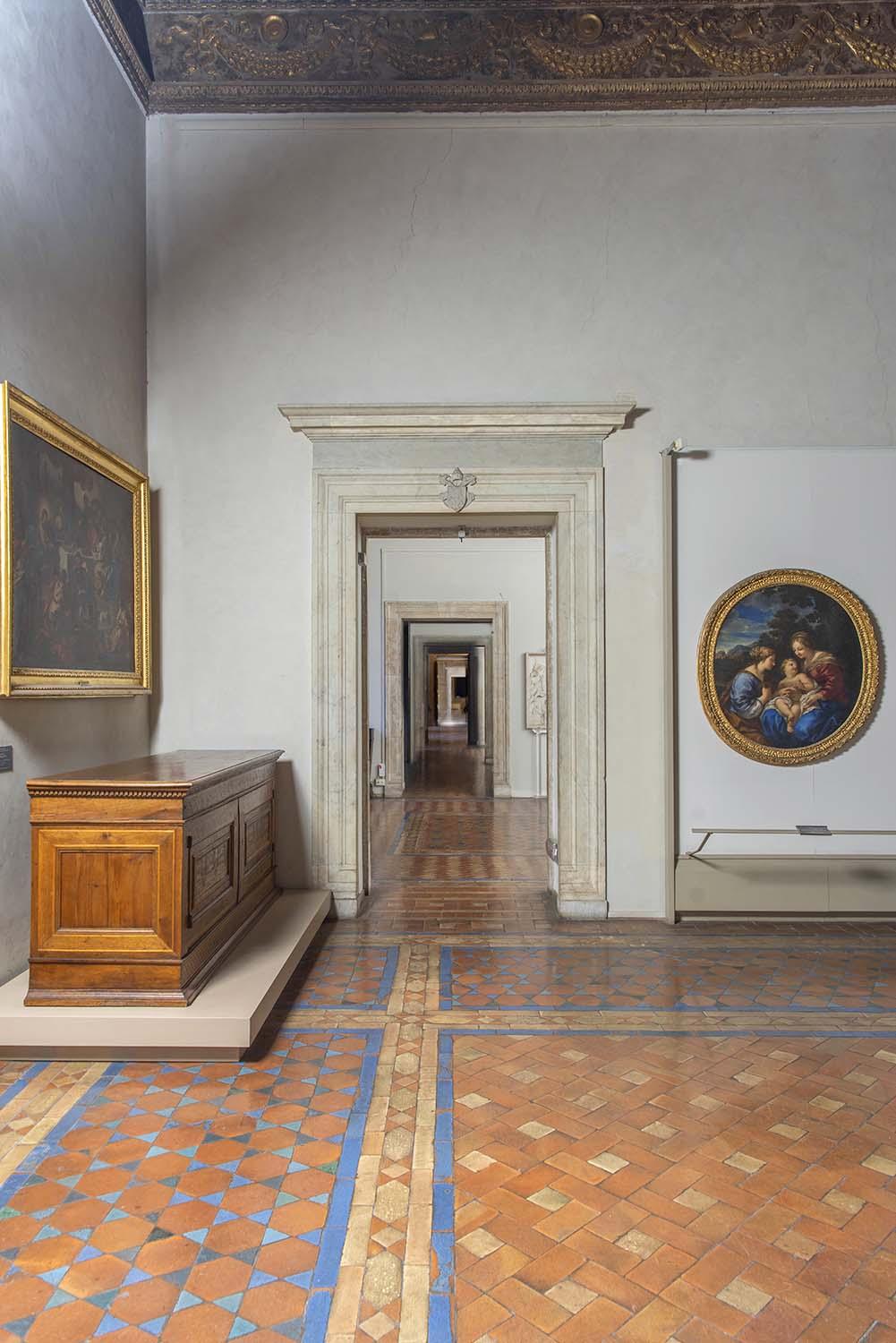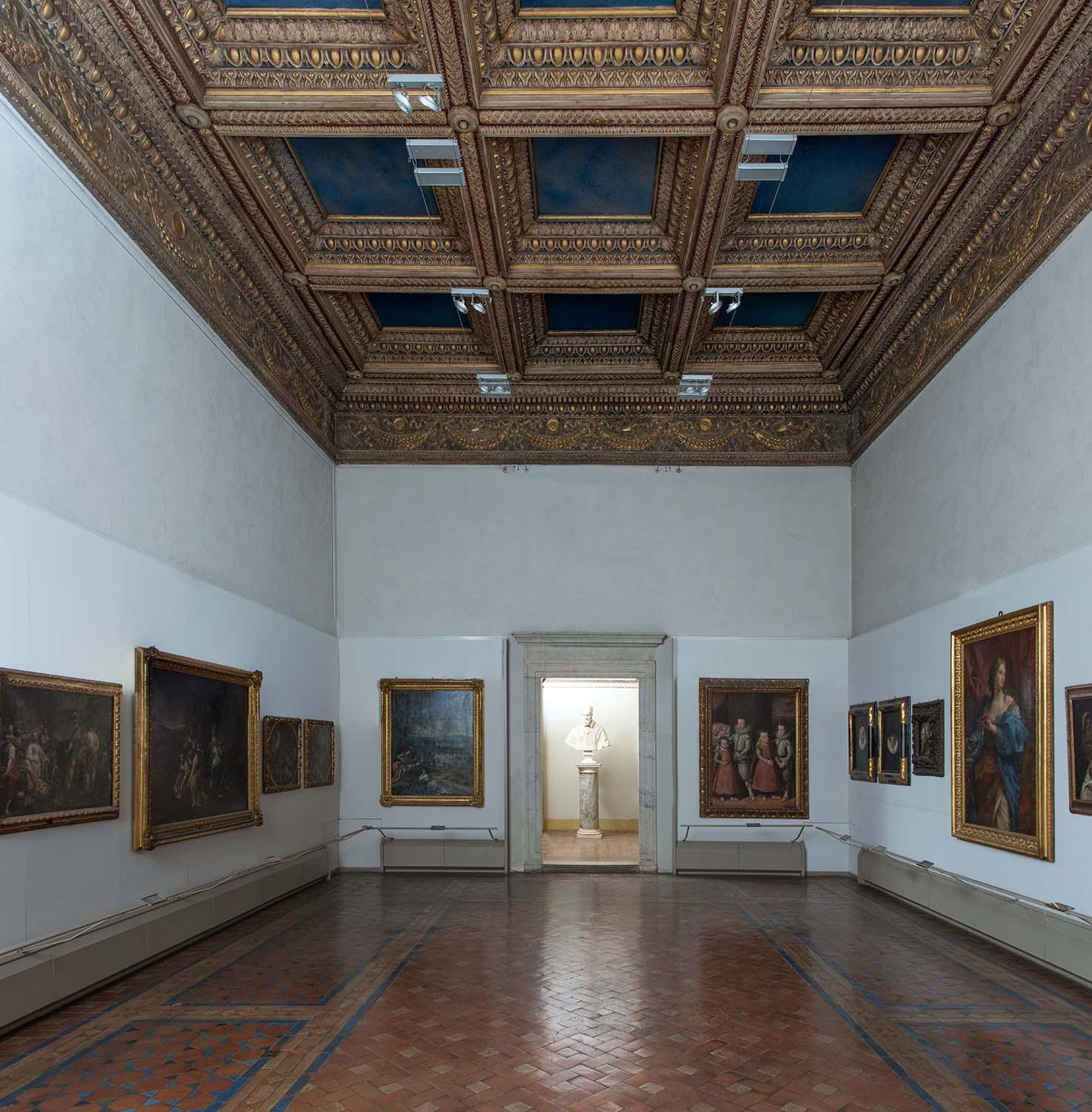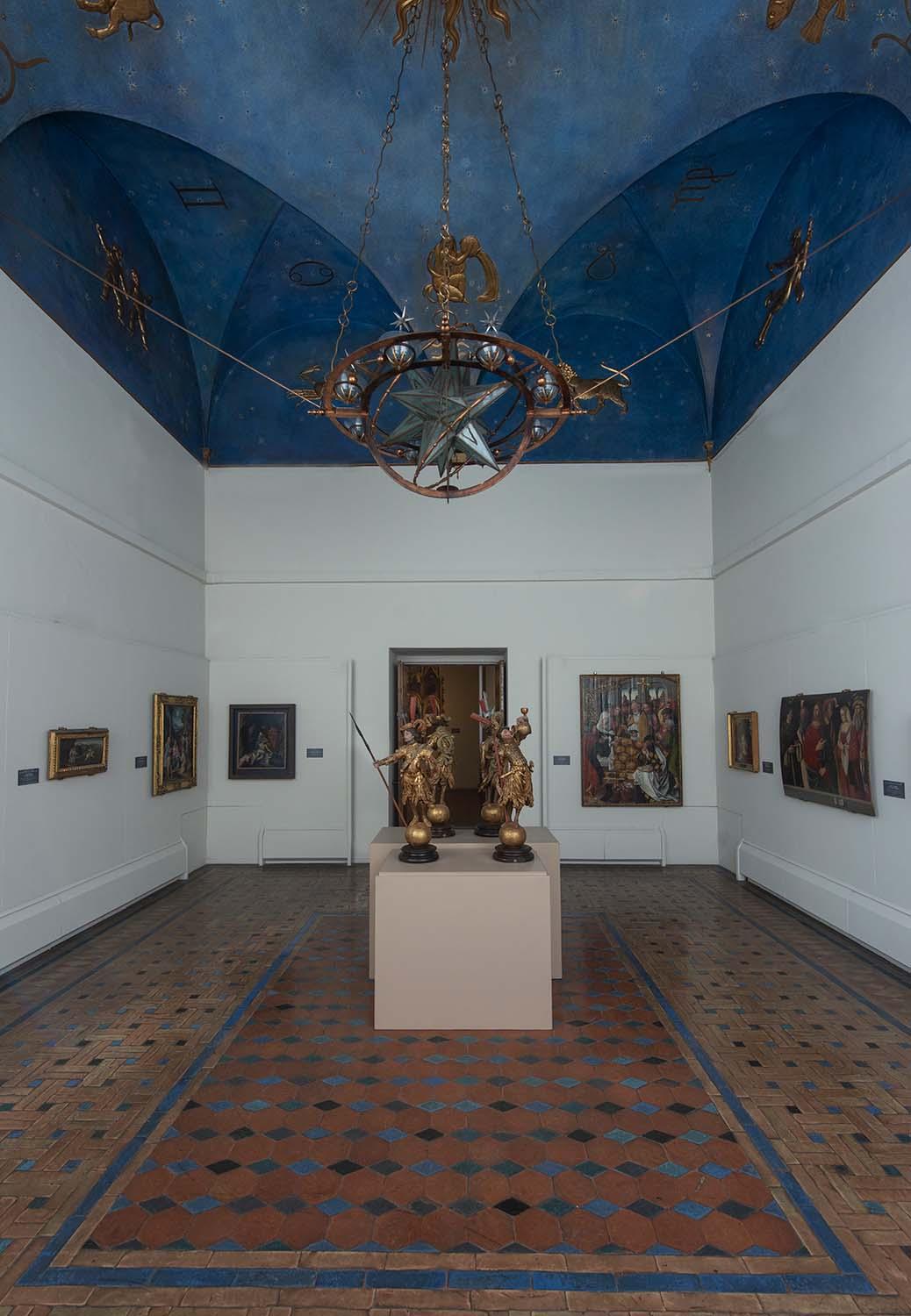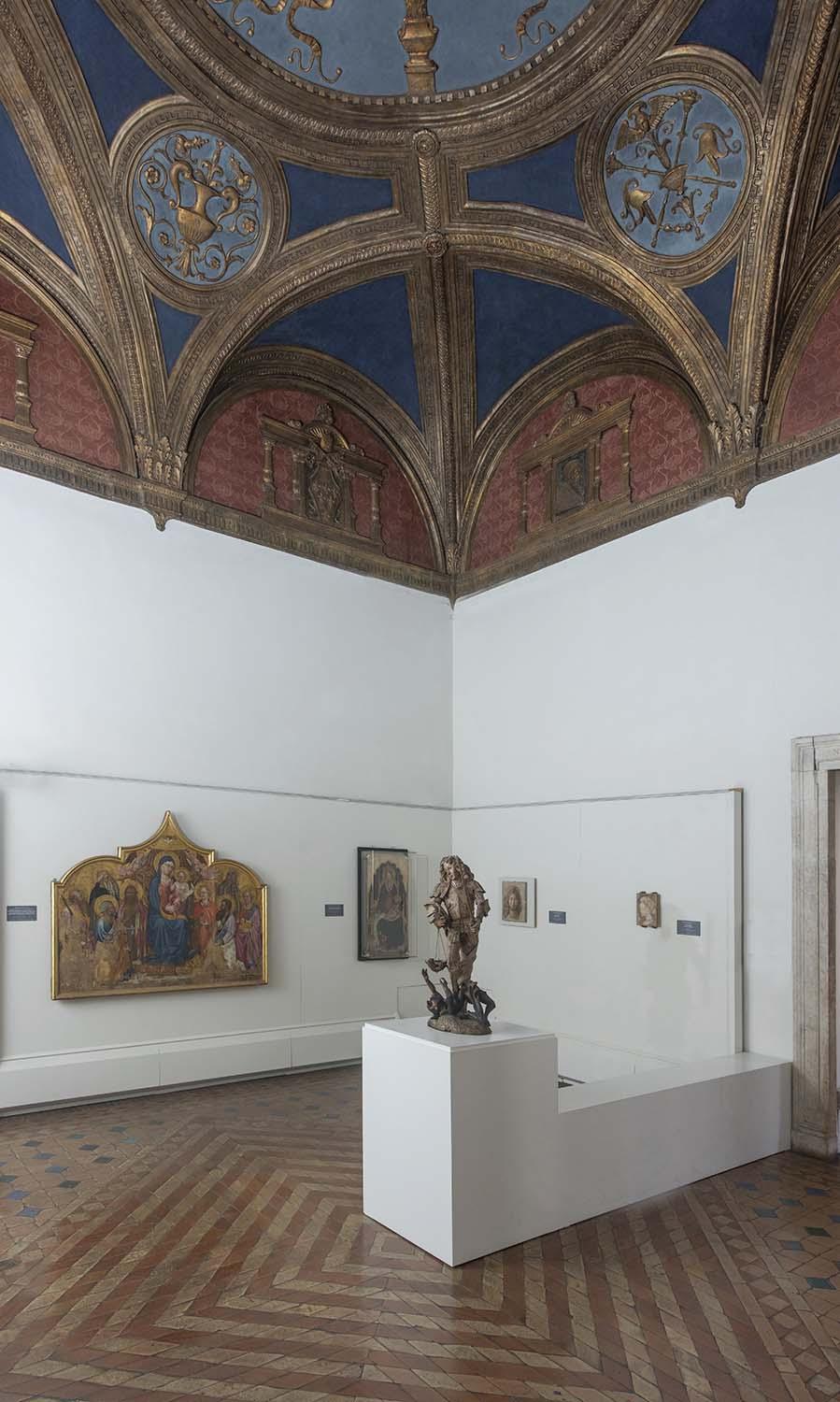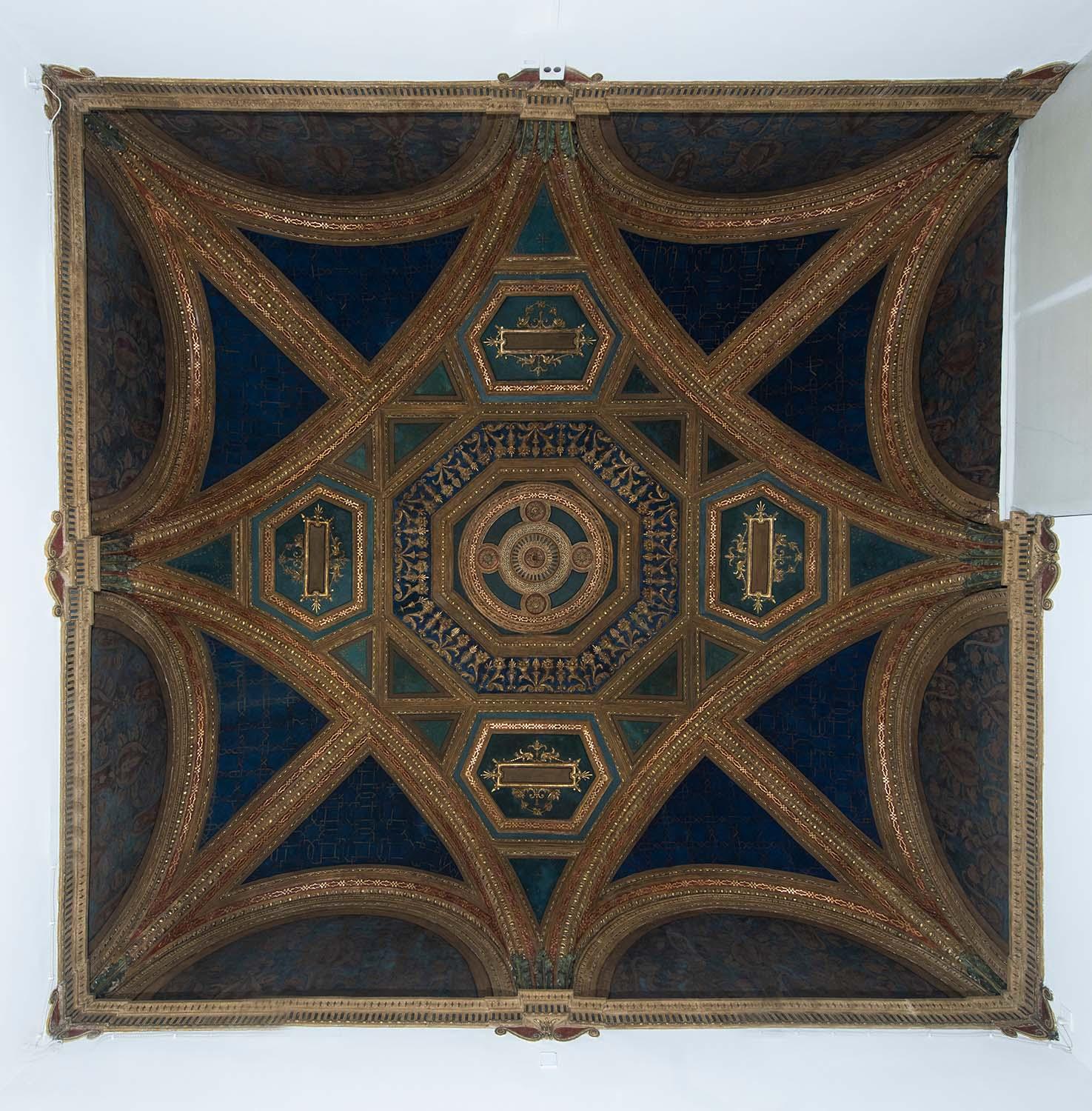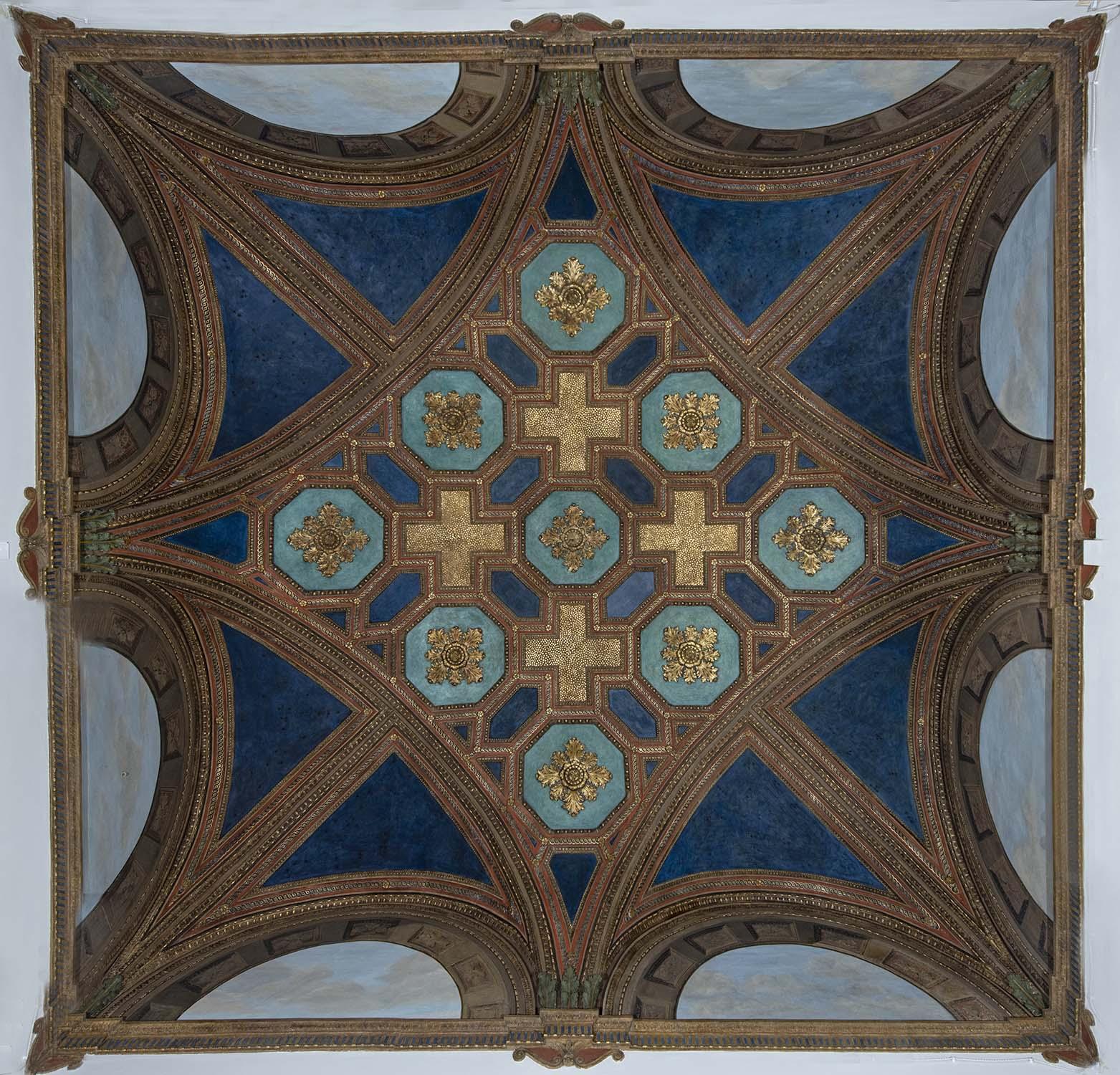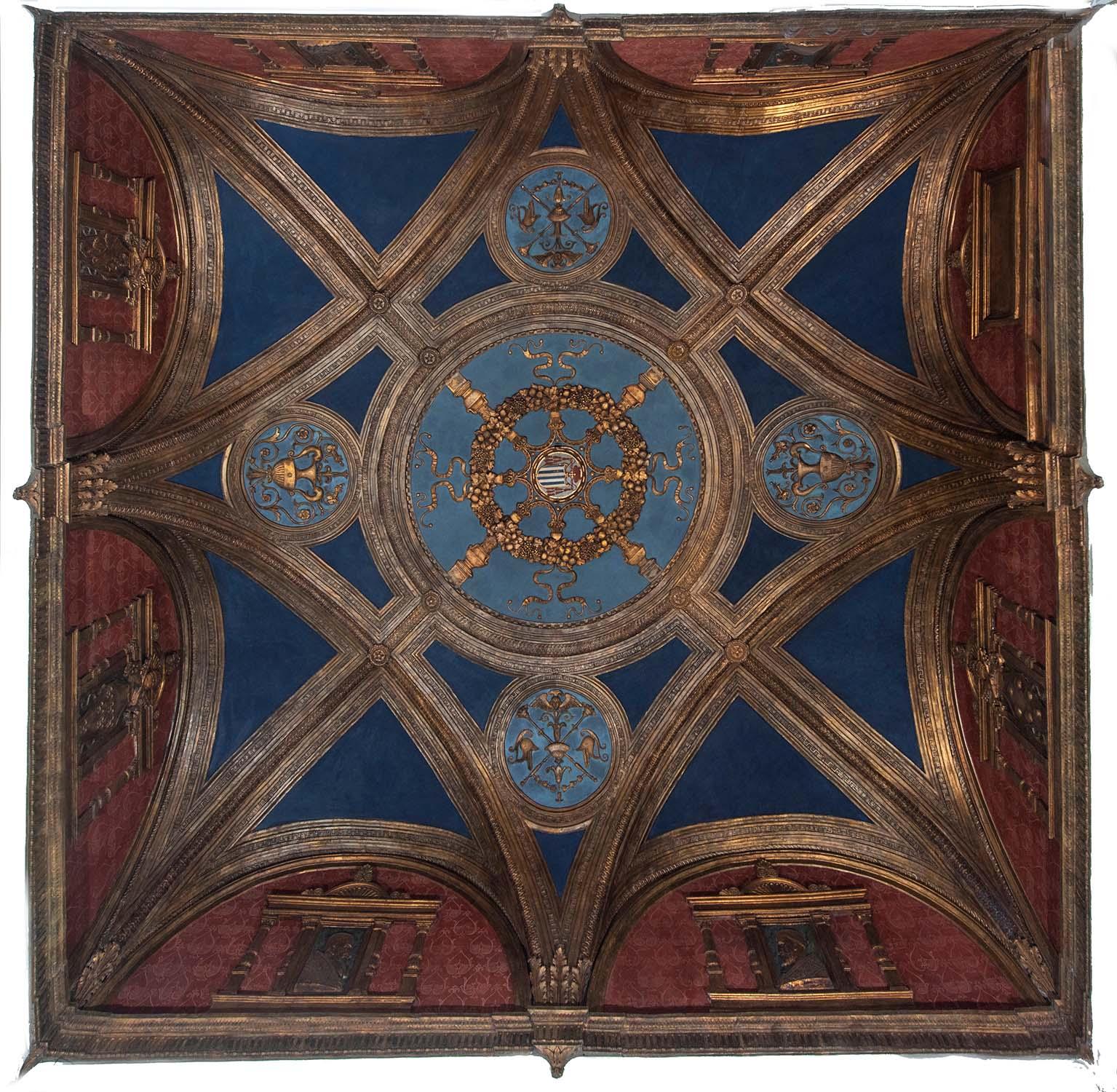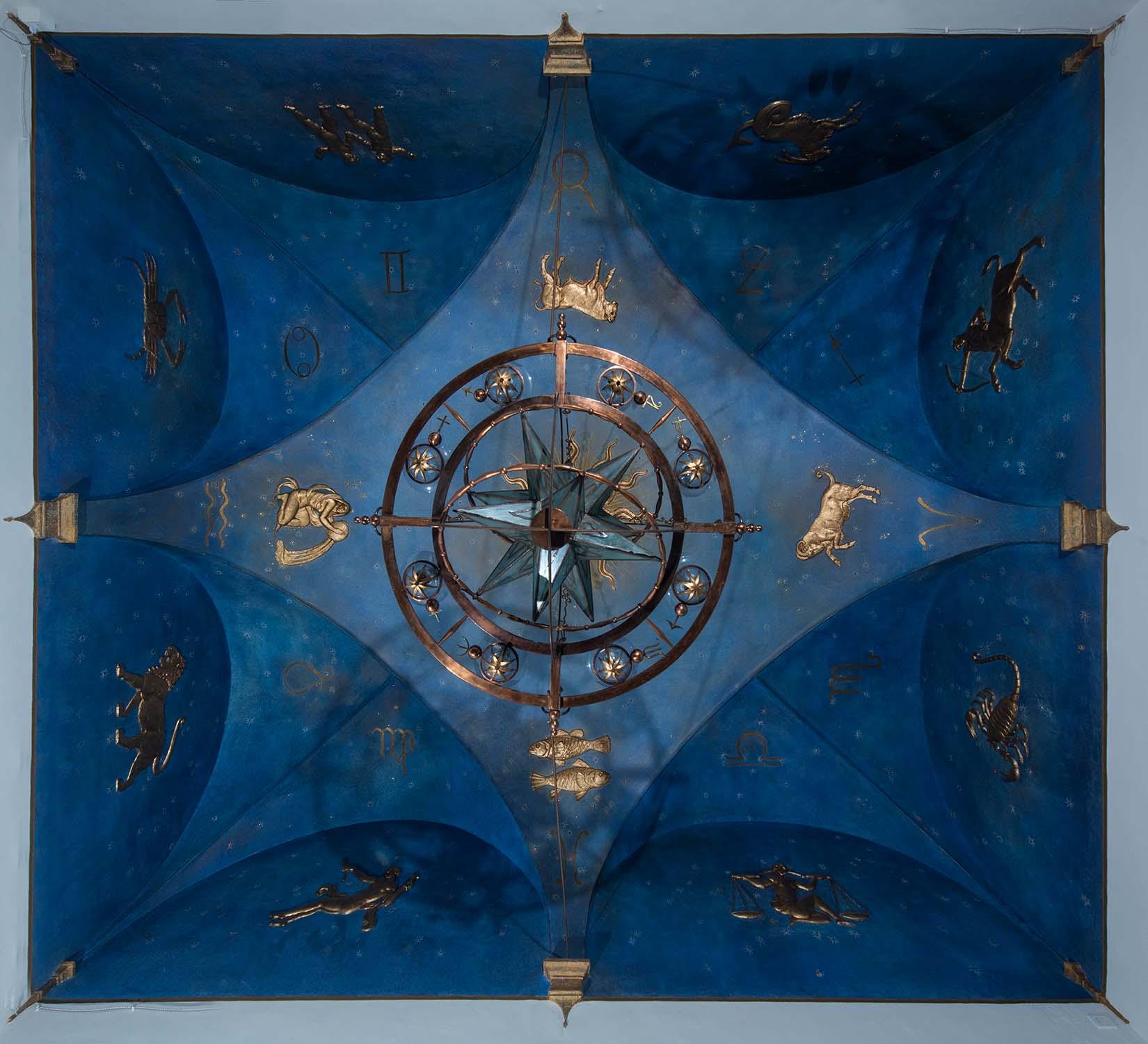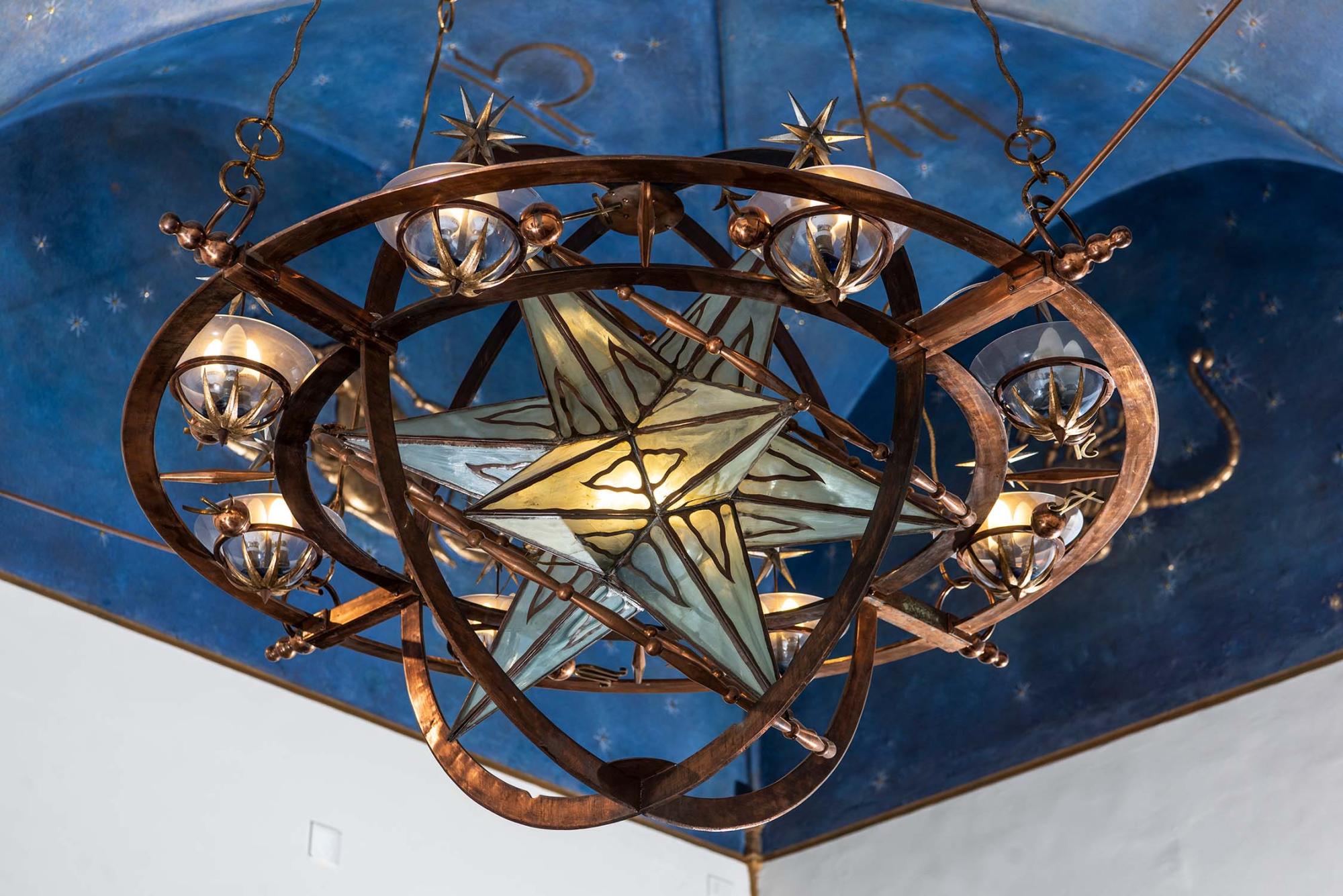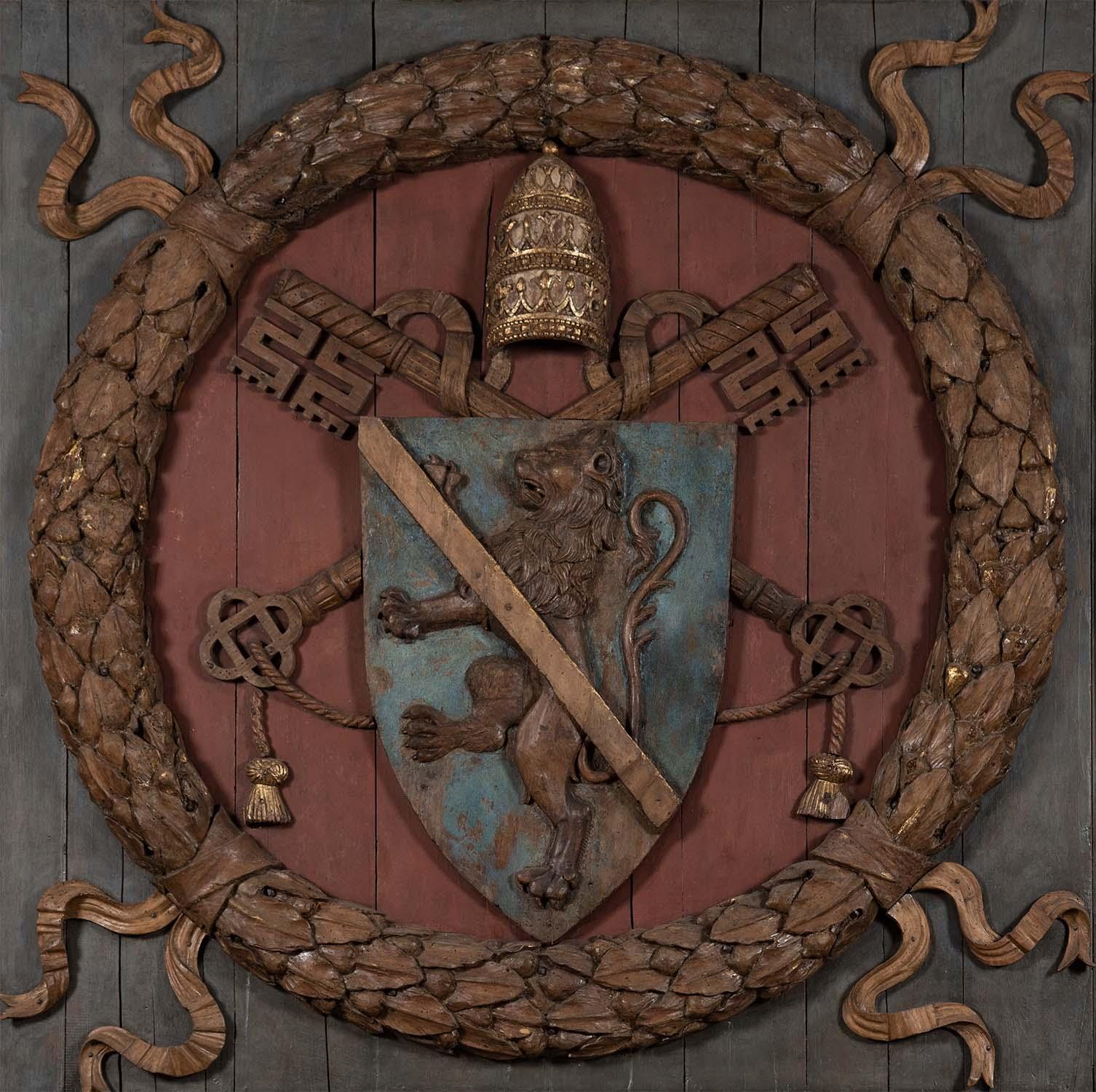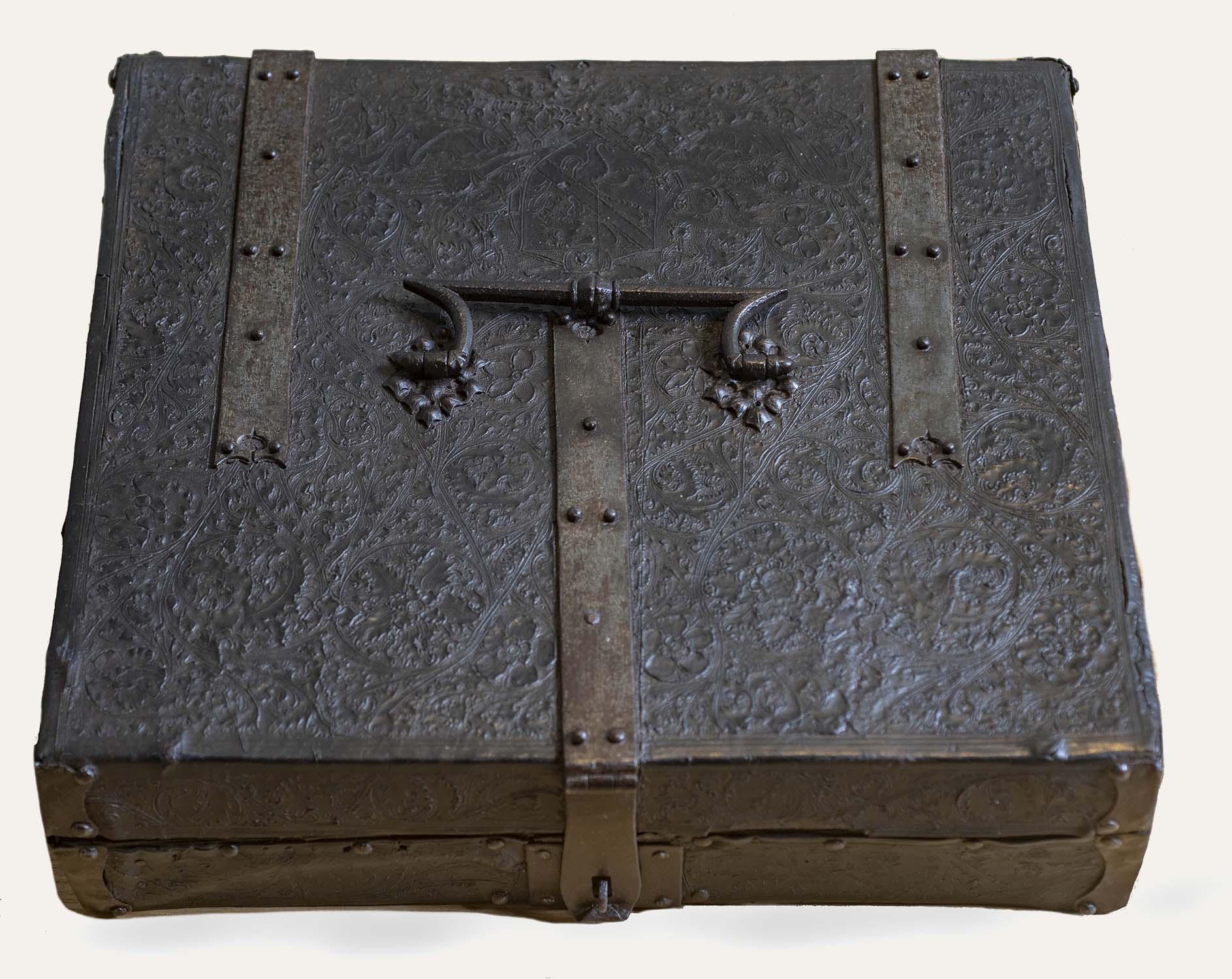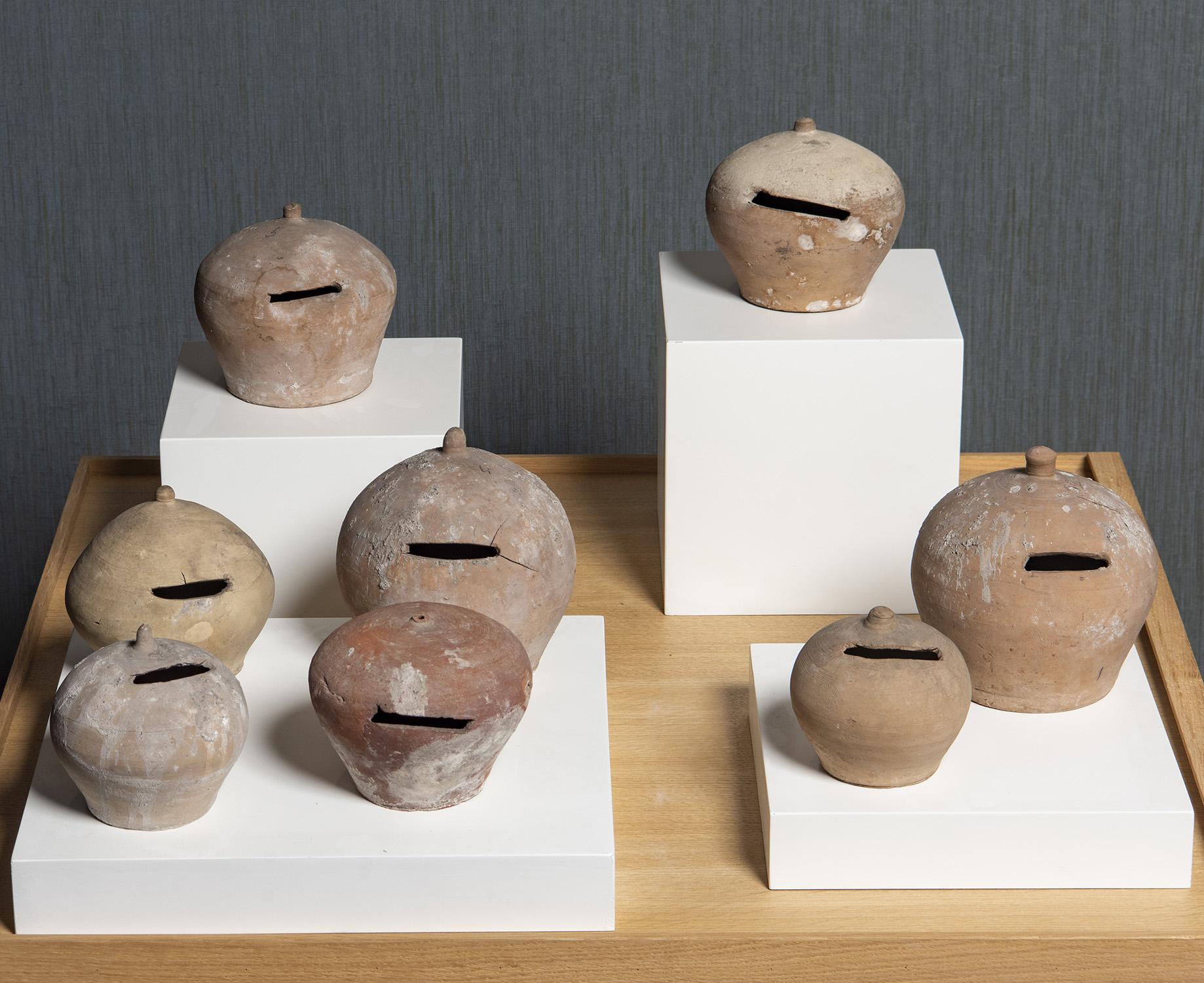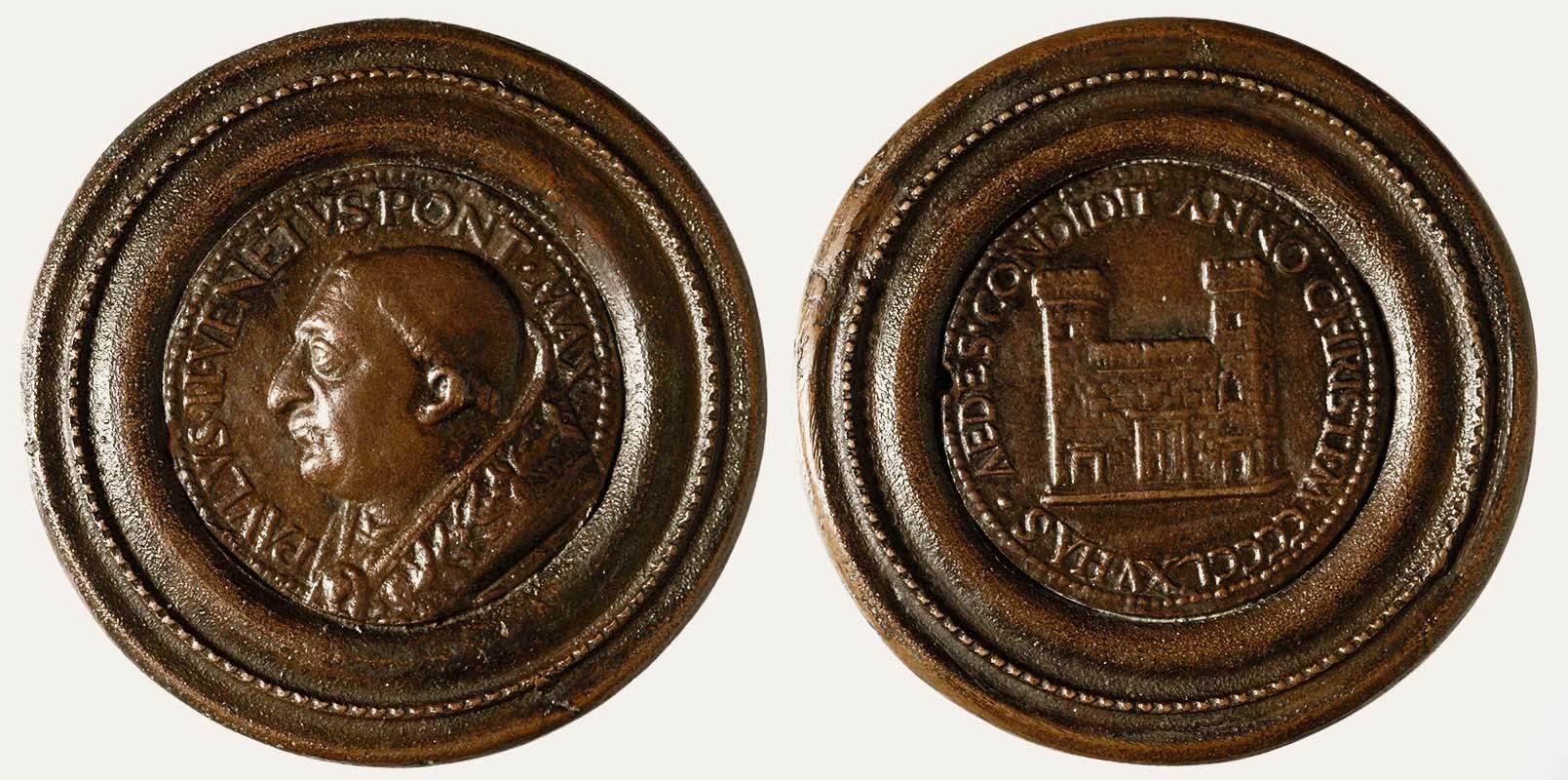Cybo Apartment
A luxurious cardinals residence located along the ancient via Papale, the present-day via del Plebiscito
The name Cybo Apartment refers to the suite of seven rooms located in the northern wing of the building, immediately after the Sala Regia, in some parts, overlooking the internal garden, in others, the ancient via Papale, today called via del Plebiscito. This suite of rooms date back to end of the fifteenth and beginning of the sixteenth century, when they were constructed to be a private residence for Cardinal Lorenzo Mari Cybo (ca 1450-1504), incumbent of the Basilica of San Marco between 1491 and 1503.
The name Cybo Apartment refers to the suite of seven rooms located in the northern wing of the building, immediately after the Sala Regia, in some parts, overlooking the internal garden, in others, the ancient via Papale, today called via del Plebiscito. This suite of rooms date back to end of the fifteenth and beginning of the sixteenth century, when they were constructed to be a private residence for Cardinal Lorenzo Mari Cybo (ca 1450-1504), incumbent of the Basilica of San Marco between 1491 and 1503.
With the donation of the palace to the Republic of Venice, in 1564, the apartment became home to the titular cardinals of the Basilica of San Marco. In the 1920s, the art historian Federico Hermanin (1868-1953) assigned the seven rooms to the Museum: to this end, he renovated them in the Renaissance style, using sketches by Ludovico Seitz (1844-1908) for the stucco and gilding ceilings.
Since the end of the Second World War, the rooms of the Cybo Apartment have housed the permanent collections of the Museum.
On display in the room today are some objects that belonged to Pietro Barbo when he was a cardinal. The travel box, executed in leather probably by a Venetian artist, features a floral decoration in classical style and his cardinal's coat of arms. In the center of the room stands the Bust of Paul II, the work of the great Tuscan sculptor Mino da Fiesole (1429-1484).
On display there is a bronze medallion made by Paul II in 1465 to celebrate the beginning of the palace's enlargement works: on the recto the medallion shows the pontiff's effigy in profile, on the verso the palace itself, in late medieval forms.
This and other commemorative medals were placed in earthenware piggy banks, which in turn were placed inside the masonry, following a classically derived ritual. The second showcase displays some of these piggy banks found during nineteenth- and twentieth-century work.
Behind him stands the wooden Coat of Arms of Paul II: the work, attributed to the Florentine architect and carver Giovannino de' Dolci (news 1435-1468), shows the rampant lion on a blue field, surmounted by the tiara and crossed keys. Discovered in the basement of the palace in the early 20th century, it has been identified as one of the ceiling lacunars that originally adorned the Sala del Mappamondo.
Pieces of particular significance include: the Christ Pantocrator, the Lunette from the Niche of the Palliums, the Madonna of Acuto, the Head of a Woman by Nicola Pisano, the Face of Christ by Beato Angelico, the four reliefs depicting Scenes from the Life of Saint Jerome by Mino da Fiesole. The chapel, with sixteenth-century decoration by Girolamo Muziano (1532-1592), houses the Bust of Innocent X by Alessandro Algardi.
Tra i pezzi di straordinario valore si segnalano il Cristo Pantocrator, la Lunetta della Nicchia dei Palli, la Madonna di Acuto, la Testa femminile di Nicola Pisano, il Volto di Cristo di Beato Angelico, i quattro rilievi con Storie di San Girolamo di Mino da Fiesole. La cappella, con decorazione cinquecentesca di Girolamo Muziano (1532-1592), ospita il Busto di Innocenzo X di Alessandro Algardi.

